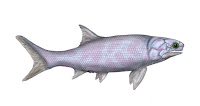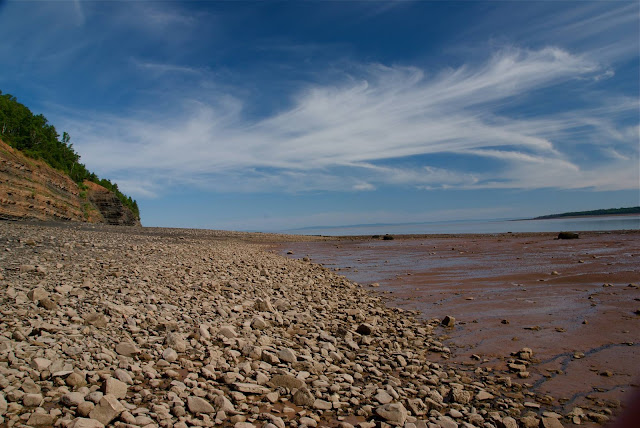A Catch Best Left in Stone - The Palaeoniscoid

A Little Fish with an Unfriendly Bite The Palaeoniscoid (photo art: Nasty palaeoniscoid by Maniraptora) Here is a beautiful example of a lower jaw, with sharp teeth, of a 350 million year old palaeoniscoid fish from the Lower Carboniferous of Blue Beach, Nova Scotia, Canada. The specimen actually came from the small unnamed creek that follows the access road and drains into the Minas Basin at Blue Beach. T his part of the creek is a rare location to find such a specimen, but lo and behold, that important fossil was just sitting there. Historically, nothing of importance has ever been found in the creek - all the good stuff comes from the beach itself. This specimen is preserved 3-dimensionally in a prominent clayshale bed. Very few intact skeletons are known from the Blue Beach locality, and most of those now known are recent finds being made by the Blue Beach Museum, and by some of the visitors it attracts. Here we see the scales...

